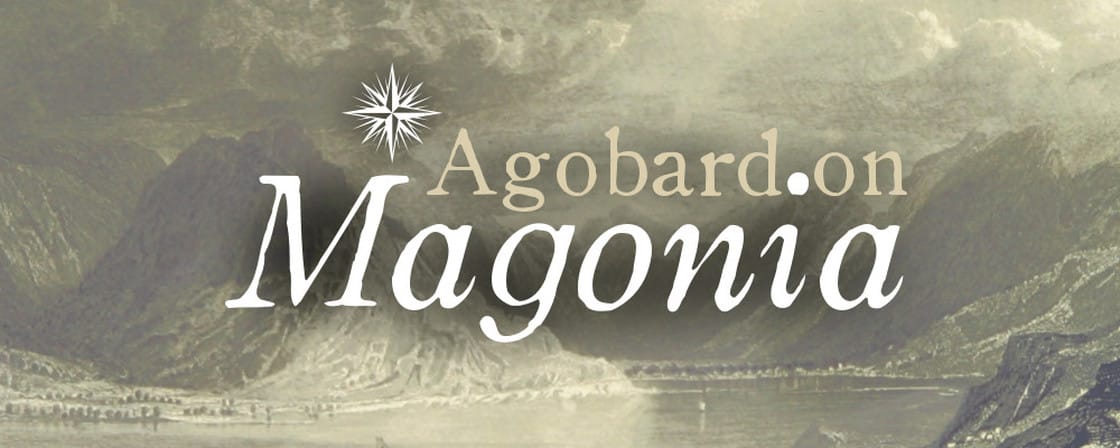Agobard of Lyon
De Grandine et Tonitruis
815 CE
|
NOTE |
St. Agobard (c. 779-840 CE) was the Carolingian archbishop of Lyon famous for his critical essays attacking the royal family, Jews, and superstition. His essay on "On Hail and Thunder," written in 815, is the oldest surviving description of the popular belief in weather magicians who lived in a sky world called Magonia and used flying ships to throw hail to the ground below. Charlemagne had outlawed weather magic in 789 in the Admonitio generalis (cap. 65). The belief in weather wizards called tempestarii was widespread, and is reflected in the Solomonarii of Transylvania. The ufologist Jacques Vallée took from Agobard's account the title of his most famous book, Passport to Magonia, in which he identified the flying ships as part of the flying saucer phenomenon.
|
Cap. 1. In these regions nearly all men, noble and of low degree, town folk and country folk, old and young, think that hail and thunder can be produced at the will of man. For on hearing thunder and seeing lightning, they say, "It is a raised breeze." When asked what they mean by "raised," they aver, some shamefacedly, others with confidence, as is the manner of the unexperienced, that the storm has been raised by the incantations of certain men who are called storm wizards, and hence the expression. Whether this common belief agrees with the facts is a matter to be proved by the authority of Holy Scripture.
Cap. 2. We have seen and heard many who are overwhelmed by such madness, carried away by such folly, that they believe and assert that there is a certain region called Magonia, whence ships come in the clouds: the which bear away the fruits of the earth, felled by hail and destroyed by storms, to that same country; and these sailors of the air forsooth give rewards to the weather-wizards, and receive in return the crops or other fruits. Certain ones have we seen, blinded by so dark a folly, who brought into an assembly of men four persons, three men and a woman, as having fallen from the said ships; whom they held in bonds for certain days and then presented before an assembled body of men, in our presence, as aforesaid, that they should be stoned. Howbeit the truth prevailed, after much reasoning, and they who brought them forward were confounded.
Cap. 2. We have seen and heard many who are overwhelmed by such madness, carried away by such folly, that they believe and assert that there is a certain region called Magonia, whence ships come in the clouds: the which bear away the fruits of the earth, felled by hail and destroyed by storms, to that same country; and these sailors of the air forsooth give rewards to the weather-wizards, and receive in return the crops or other fruits. Certain ones have we seen, blinded by so dark a folly, who brought into an assembly of men four persons, three men and a woman, as having fallen from the said ships; whom they held in bonds for certain days and then presented before an assembled body of men, in our presence, as aforesaid, that they should be stoned. Howbeit the truth prevailed, after much reasoning, and they who brought them forward were confounded.
|
Sources: Cap 1: Translated by Lotus Dudley in the notes to sec. 128 of N. de Montfaucon de Villars, Comte de Gabalis (New York: Macoy Publishing & Masonic Supply Co., 1922), 190; Cap 2: Translated in Reginald Lane Poole in Illustrations of the History of Medieval Thought and Learning, 2nd ed. (London: Society for Promoting Christian Knowledge, 1920), 36.
|



